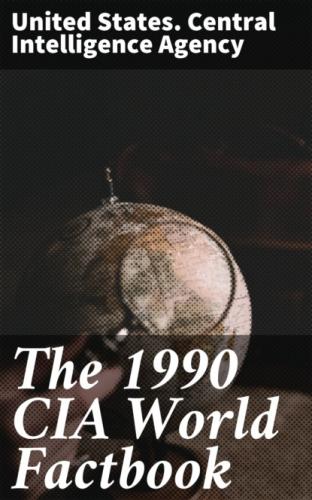Oduber; governing coalition includes the MEP, PPA, and ADN
Suffrage: universal at age 18
Elections: Parliament—last held 6 January 1989 (next to be held by January 1993); results—percent of vote by party NA; seats—(21 total) MEP 10, AVP 8, ADN 1, PPN 1, PPA 1
Diplomatic representation: none (self-governing part of the Netherlands)
Flag: blue with two narrow horizontal yellow stripes across the lower portion and a red, four-pointed star outlined in white in the upper hoist-side corner
- Economy Overview: Tourism is the mainstay of the economy. In 1985 the economy suffered a severe blow when Exxon closed its refinery, a major source of employment and foreign exchange earnings. Economic collapse was prevented by soft loans from the Dutch Government and by a booming tourist industry. Hotel capacity expanded by 20% between 1985 and 1987 and is projected to more than double by 1990. Unemployment has steadily declined from about 20% in 1986 to about 3% in 1988.
GDP: $620 million, per capita $10,000; real growth rate 16.7% (1988 est.)
Inflation rate (consumer prices): 4% (1988 est.)
Unemployment rate: 3% (1988 est.)
Budget: revenues $145 million; expenditures $185 million, including capital expenditures of $42 million (1988)
Exports: $47.5 million (f.o.b., 1988 est.); commodities—mostly petroleum products; partners—US 64%, EC
Imports: $296.0 million (c.i.f., 1988 est.); commodities—food, consumer goods, manufactures; partners—US 8%, EC
External debt: $81 million (1987)
Industrial production: growth rate - 20% (1984)
Electricity: 310,000 kW capacity; 945 million kWh produced, 15,120 kWh per capita (1989)
Industries: tourism, transshipment facilities
Agriculture: poor quality soils and low rainfall limit agricultural activity to the cultivation of aloes
Aid: none
Currency: Aruban florin (plural—florins); 1 Aruban florin (Af.) = 100 cents
Exchange rates: Aruban florins (Af.) per US$1—1.7900 (fixed rate since 1986)
Fiscal year: calendar year
- Communications
Ports: Oranjestad, Sint Nicolaas
Airfield: government-owned airport east of Oranjestad
Telecommunications: generally adequate; extensive interisland radio relay links; 72,168 telephones; stations—4 AM, 4 FM, 1 TV; 1 sea cable to St. Maarten
- Defense Forces Note: defense is the responsibility of the Netherlands until 1996—————————————————————————— Country: Ashmore and Cartier Islands (territory of Australia) - Geography Total area: 5 km2; land area: 5 km2; includes Ashmore Reef (West, Middle, and East Islets) and Cartier Island
Comparative area: about 8.5 times the size of The Mall in Washington, DC
Land boundaries: none
Coastline: 74.1 km
Maritime claims:
Contiguous zone: 12 nm;
Continental shelf: 200 meters or to depth of exploration;
Exclusive fishing zone: 200 nm;
Territorial sea: 3 nm
Climate: tropical
Terrain: low with sand and coral
Natural resources: fish
Land use: 0% arable land; 0% permanent crops; 0% meadows and pastures; 0% forest and woodland; 100% other—grass and sand
Environment: surrounded by shoals and reefs; Ashmore Reef National
Nature Reserve established in August 1983
Note: located in extreme eastern Indian Ocean between Australia and Indonesia 320 km off the northwest coast of Australia
- People
Population: no permanent inhabitants; seasonal caretakers
- Government
Long-form name: Territory of Ashmore and Cartier Islands
Type: territory of Australia administered by the Australian Ministry for Territories and Local Government
Administrative divisions: none (territory of Australia)
Legal system: relevant laws of the Northern Territory of Australia
Note: administered by the Australian Minister for Arts, Sports, the
Environment, Tourism, and Territories Graham Richardson
Diplomatic representation: none (territory of Australia)
- Economy
Overview: no economic activity
- Communications
Ports: none; offshore anchorage only
- Defense Forces
Note: defense is the responsibility of Australia; periodic
visits by the Royal Australian Navy and Royal Australian Air Force
——————————————————————————
Country: Atlantic Ocean
- Geography
Total area: 82,217,000 km2; includes Baltic Sea, Black Sea, Caribbean Sea,
Davis Strait, Denmark Strait, Drake Passage, Gulf of Mexico, Mediterranean Sea,
North Sea, Norwegian Sea, Weddell Sea, and other tributary water bodies
Comparative area: slightly less than nine times the size of the US; second-largest of the world's four oceans (after the Pacific Ocean, but larger than Indian Ocean or Arctic Ocean)
Coastline: 111,866 km
Climate: tropical cyclones (hurricanes) develop off the coast of Africa near Cape Verde and move westward into the Caribbean Sea; hurricanes can occur from May to December, but are most frequent from August to November
Terrain: surface usually covered with sea ice in Labrador Sea, Denmark Strait, and Baltic Sea from October to June; clockwise warm water gyre (broad, circular system of currents) in the north Atlantic, counterclockwise warm water gyre in the south Atlantic; the ocean floor is dominated by the Mid-Atlantic Ridge, a rugged north-south centerline for the entire Atlantic basin; maximum depth is 8,605 meters in the Puerto Rico Trench
Natural resources: oil and gas fields, fish, marine mammals (seals and whales), sand and gravel aggregates, placer deposits, polymetallic nodules, precious stones
Environment: endangered marine species include the manatee, seals, sea lions, turtles, and whales; municipal sludge pollution off eastern US, southern Brazil, and eastern Argentina; oil pollution in Caribbean Sea, Gulf of Mexico, Lake Maracaibo, Mediterranean Sea, and North Sea; industrial waste and municipal sewage pollution in Baltic Sea, North Sea, and Mediterranean Sea; icebergs common in Davis Strait, Denmark Strait, and the northwestern Atlantic from February to August and have been spotted as far south as Bermuda and the Madeira Islands; icebergs from Antarctica occur in the extreme southern Atlantic
Note: ships subject to superstructure icing in extreme north Atlantic from October to May and extreme south Atlantic from May to October; persistent fog can be a hazard to shipping from May to September; major choke points include the Dardanelles, Strait of Gibraltar, access to the Panama and Suez Canals; strategic straits include the Dover Strait, Straits of Florida, Mona Passage, The Sound (Oresund), and Windward Passage; north Atlantic shipping lanes subject to icebergs from February to August; the Equator divides the
